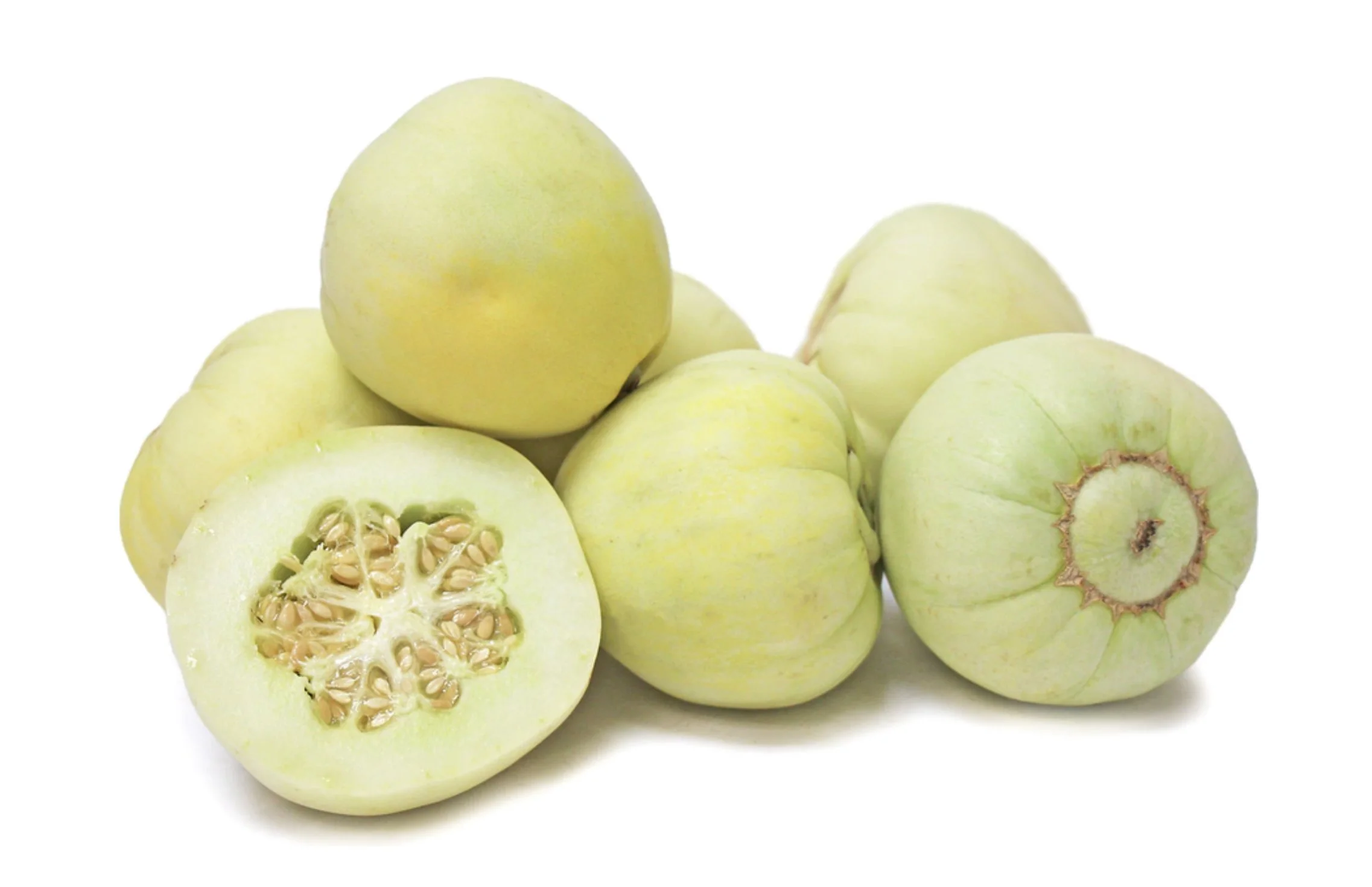Sakata's Sweet
Sakata's Sweet
SAKATA'S SWEET MELON SEEDS
Cucumis melo var. makuwa
Sakata is the name of one of the oldest and most prolific commercial seed companies in Japan. Today they are a huge multinational corporation, offering patented F1 hybrids and researching transgenic seed production more often than preserving landraces. Decades ago, however, they were a veritable treasure trove of unique open-pollinated varieties, meticulously selected and perfected for commercial markets. This melon was among those treasures.
In the very distant past these distinctive little melons probably made their way to Japan by way of Korea. In the past few years we had offered a Korean selection, Sagwa Chamoe. Sakata's Sweet is a good alternative, if somewhat later to mature here in the Northeast. In the Midwest Sakata's Sweet grew like gangbusters, producing more fruit than we could possibly eat, and we highly recommend this variety for growers in the hot humid regions of the country, as they are not only productive but far less susceptible to disease than common melons. And they are happy to be trellised in a small garden.
These softball-sized melons are sweet and crisp like an apple, with thin edible skin, making them appropriate to eat like an apple. Unlike an apple, they do not hold on or off the vine for very long. If you find yourself with more than you can consume, ruthlessly tuck them into lunchboxes and cut them up into a big jar of sweet refrigerator pickle brine.
Seeds may be sown directly into warm soil after all danger of frost has passed, but we prefer to start these indoors, around 3 weeks before the last spring frost. Kept warm and moist in bright light seeds germinate promptly, usually in a matter of days. Thin to one seedling per pot or cell and grow on at warm room temperature in bright light, fertilizing weekly with dilute fish and seaweed emulsions. Harden off thoroughly before transplanting into warm fertile soil in full sun. Gently train vines onto a trellis, or mulch ground generously and allow to sprawl.
Harvest these fruits just after they turn from green to white and merely threaten to blush with yellow. Fully yellow fruits are past their peak.
Packet contains at least 30 seeds.
